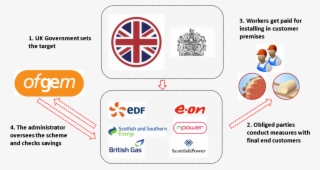The CBR is a test to evaluate the quality of a soil material based on its strength, measured through a scale plate test. CBR stands for “California Bearing Ratio” in Spanish, although in countries like Mexico this test is also known by the acronym VRS, Relative Value of Support. You can visit cbr testing companies online and find the solutions now.
Although it was developed in 1925, the essay begins to appear in the North American standards ASTM (by American Standards for Testing and Materials) from 1964, in its version for laboratory (ASTM D 1883), and in its version for the field (ASTM D 4429) . Despite its multiple limitations, as will be indicated later in this article, today, the CBR is one of the most widespread and accepted trials in the world due to the relative low cost of execution (when compared with triaxial tests), since it is associated with a number of correlations and semi-empirical methods of pavement design.

According to ASTM D 1883-07, the CBR is a load test that uses a metallic piston, 0.5 square inches in area, to penetrate from the surface of a compacted soil into a metal mold at a constant rate of penetration. CBR, the test parameter, is defined as the proportion between the unit weight on the piston necessary to go through 0.1 “(2.5 cm) and 0.2” (5 cm) in the tested soil, and the unit load required to penetrate the same amount on a standard well graded pitted stone; this relationship is expressed as a percentage.
The procedure for executing the CBR test consists of the following steps:
- Determination of the optimum humidity and maximum density of the soil samples using the modified or normal Proctor test.
- Add water to a soil sample to achieve optimal moisture.
- Compact the sample in three standardized CBR molds of 15.24 cm in diameter and 17.78 cm in height. The sample is compacted in 3 layers per mold with the compaction energy of each mold being 15, 30 or 60 strokes per layer using a 2.5 kg mallet that is freely dropped from a height of 305 mm.
- Subsequently, the mold is enraza, dismantled, and reassembled inverted.
- The molds are immersed in water (in some test modalities the sample is not immersed).
- Placing of the perforated plate and the shank as well as the necessary weights to calculate the calculated overload.
- Place the measuring tripod on the edge of the mold, matching the stem of the microcompactor.
- Take daily measurements of the micro-comparator for at least 4 days.
- Remove the sample from the water, drain, and dry externally.
- Relate the weight on the incursion piston by means of the CBR press and take the readings of the penetration pressure curve.
Once the test is finished, the results should be presented in a dry density graph, CBR index similar to the one shown below. It is also convenient to show the data of compaction, humidity, density, swelling, and absorption. It should be noted that the CBR index is not an intrinsic property of the soil, but depends on the soil moisture-density conditions.
The CBR can also be calculated in situ on the natural terrain or in the laboratory on undisturbed samples. However, the results and CBR values must be taken with some caution since it is a test that presents some dispersion of results (like the SPT), does not reflect the conditions to which the soil will be subjected and is an unreliable test for floors with high CBR.





